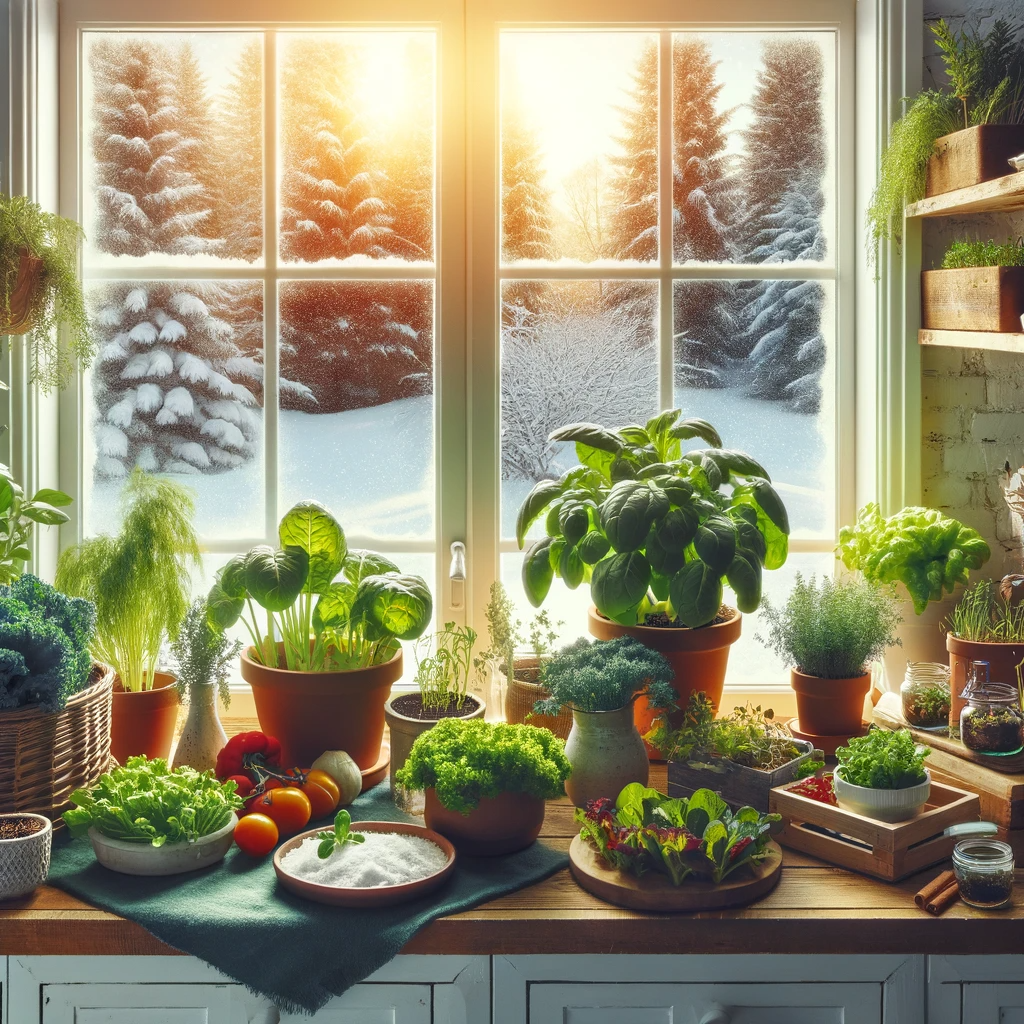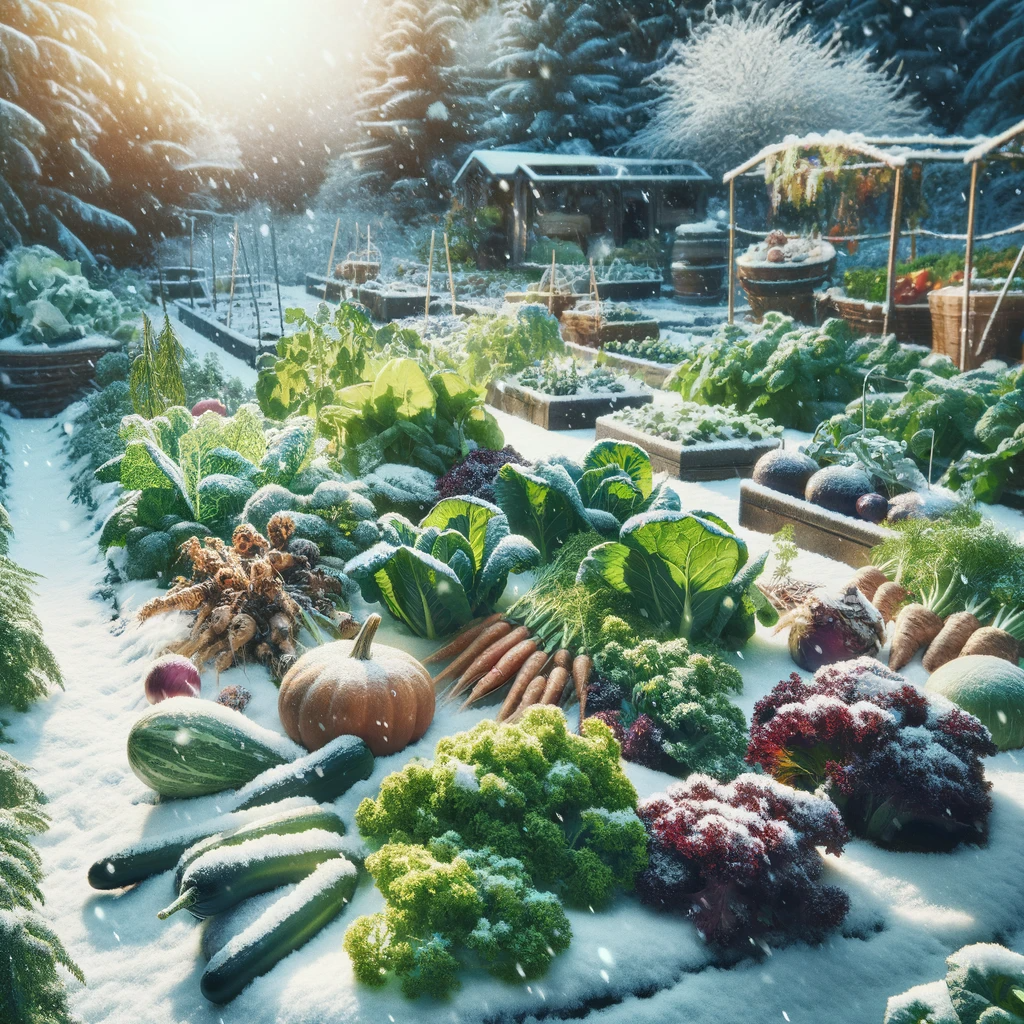Vegetables to Grow in Winter: Your Ultimate Guide for a Sustainable Garden
The Winter Garden: A New Perspective
When you think of winter, you might envision a dormant garden, but this season can be surprisingly active. Winter gardening requires understanding the microclimates within your garden space, the soil’s needs during colder weather, and which vegetables are suited for a winter harvest. It’s about altering your perspective from traditional summer gardening and embracing the cooler, quieter months.
Preparing Your Winter Garden
Preparation is key. Start by selecting a site that receives ample winter sunlight and is protected from harsh winds. Amend your soil with compost to ensure it’s rich in nutrients and has good drainage. This is essential as cold, waterlogged soil can damage roots. Raised beds or covered rows can provide necessary drainage and protect your plants from frost.
Choosing the Right Vegetables
Some vegetables actually do better in cold weather. They’re often referred to as “cool-season” crops. These include root vegetables like carrots and beets, leafy greens such as kale and spinach, and cruciferous vegetables like cabbage and broccoli. Each of these has varieties that are particularly suited for cold weather, often noted as “winter” or “hardy” in their names.
Timing Is Everything
The secret to a successful winter vegetable garden is timing. Many winter vegetables should be planted in late summer or early autumn so they can establish themselves while the weather is still mild. For regions with mild winters, some vegetables can be planted even later. Consult local planting guides for the best times to sow each type of vegetable in your area.
Can You Grow Carrots in Winter?
The humble carrot transforms in winter, becoming even sweeter. Sow carrot seeds in well-draining soil in late summer. As the cold sets in, mulch heavily to prevent the soil from freezing solid. Regular watering before the frost will insulate the roots. In the depth of winter, a layer of snow or a cold frame can protect your crop, resulting in deliciously sweet carrots perfect for a variety of dishes.
Is Broccoli Winter-Hardy?
Broccoli is a cold-weather favorite, with varieties that are made for winter harvests. Begin indoors in late summer and transplant into a garden rich with organic material. Protect your plants from extreme cold with a frost blanket and ensure the soil is mulched to maintain warmth and moisture. Your efforts will be rewarded with lush broccoli crowns ready for harvest throughout the winter.
Explore the Royal Horticultural Society for expert tips on broccoli cultivation.
How Well Does Cabbage Grow in Cold Weather?
Cabbage is not only cold-tolerant but also versatile. Plant seeds in rows, leaving room for growth, and mulch around the plants to retain warmth. With a steady supply of nutrients and protection from harsh weather, you’ll be able to enjoy crisp, sweet cabbages all winter long.
The Gardening Channel offers detailed advice on growing cabbage.
Can Kale Survive the Winter Chill?
Kale’s hardiness is unmatched in the winter garden. Its flavor even improves after a frost! Plant in compost-rich soil and water regularly until the cold sets in. Kale can usually fend for itself during the winter, but during extreme cold, a simple burlap cover can offer adequate protection.
The National Gardening Association has a wealth of information on growing kale in winter.
Are Peas Suitable for Winter Growth?
Choose winter pea varieties and plant them in a sunny, sheltered spot in autumn. With minimal care, they’ll climb and flourish, offering a sweet, early winter harvest.
For a deep dive into growing peas, check out Gardener’s Path.
Incorporating these vegetables into your winter garden not only provides fresh produce but also contributes to a zero-waste lifestyle. For additional resources and advice on living sustainably and reducing waste at home, visit our Zero Waste Lifestyle section. Our guides on Starting Your Zero Waste Journey and Reducing Plastic Waste are great places to begin. By growing your own food even in the colder months, you’re taking a significant step towards sustainability and self-sufficiency. Happy winter gardening!
Use Companion Planting for Winter Vegetables
Companion planting, an age-old gardening practice, involves growing different plants together for mutual benefit. This section delves deeply into companion planting strategies specifically tailored for winter vegetables, highlighting how certain combinations can enhance growth, deter pests, and improve soil health during the colder months.
The Science Behind Companion Planting
- Pest Control: Certain plants emit chemicals or scents that naturally repel pests, protecting neighboring plants.
- Nutrient Sharing: Some plants fix nutrients in the soil, which can be beneficial for companion plants with different nutrient needs.
- Spatial Synergy: Combining plants with varying root depths and growth patterns maximizes garden space and resource utilization.
Key Companion Planting Combinations for Winter
- Cabbage and Dill: Dill attracts beneficial insects that prey on common cabbage pests. Plant dill interspersed among cabbage plants.
- Broccoli and Calendula: Calendula draws pests away from broccoli and attracts pollinators. Plant calendula around the edges of broccoli beds.
- Leeks and Carrots: Each plant repels the other’s pests. Plant leeks and carrots in alternate rows.
- Spinach and Strawberries: Strawberries provide ground cover for spinach. Plant spinach close to strawberry plants.
- Garlic and Roses (Rosemary, Sage, Thyme): Garlic repels pests that affect these plants. Intersperse garlic cloves among them.
Advanced Techniques in Companion Planting
- Trap Cropping: Planting certain crops to lure pests away from main crops.
- Intercropping: Growing two or more crops in proximity for pest control and maximizing yields.
- Succession Planting: Sequential planting of different crops in the same space to maintain soil health and continuous harvest.
Incorporating Permaculture Principles
Utilize the vertical and horizontal space by planting a variety of species together. Create microclimates using companion plants to modify the local environment, like windbreaks or shading, to protect sensitive winter crops.
Companion Planting and Soil Health
Utilize legumes like peas and beans near nitrogen-loving plants. Use banana peels or wood ash in compost to enhance phosphorus and potassium for companion plants.
Companion planting in winter gardening is a symbiotic strategy that maximizes the efficiency and productivity of your garden. By understanding and implementing these intricate relationships, gardeners can create a thriving, sustainable winter garden that is both productive and eco-friendly. This approach aligns perfectly with the ethos of EarthlyEcoEssence, promoting a healthier, more sustainable way of living in harmony with nature.







Pingback: Learn How To Ferment Vegetables: The Art of Fermentation -
Pingback: Vegetables You Can Grow Indoors In Winter